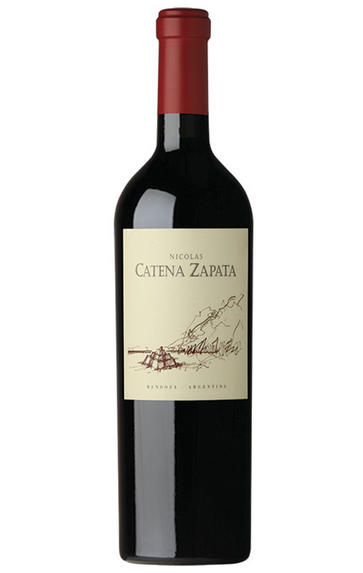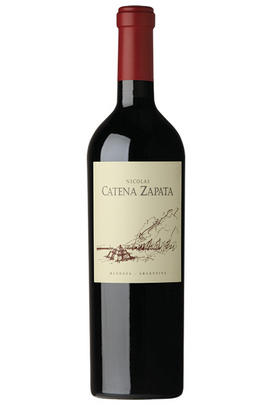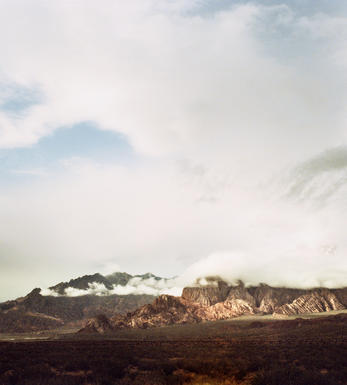
2015 Catena Zapata, Nicolás, Mendoza, Argentina

Critics reviews
Luis Gutirrez - 29/06/2018
About this WINE

Bodega Catena Zapata
Nicolás Catena developed a vinous knowledge from exposure to Bordeaux and Napa wines in the 1970s, combined with experience of working his family winery. His vision saw the establishment of the now 4th generation family winery, which has built its successes upon the fastidious viticulture & vinification of individual plots of Malbec and Cabernet Sauvignon of the highest quality.
Planted at higher altitudes in the Andes, the vines enjoying cool nights and soils to retain all-important acidity and freshness, a style which is apparent throughout their wines. A complex vinification includes 200 micro-vinifications to respect the individual rows, altitudes and harvest times, which are then married together in French oak for 24 months, and a further 2 years in bottle before release.
Initially produced in 1997, a blend of Malbec and Cabernet Sauvignon, the Nicolás Catena Zapata quickly gained traction when it outperformed numerous 1st growth Bordeaux and fine wines from across the world in a series of blind tastings. The wine has impressed the most renowned wine critics whose praise does not go unnoticed, given the loyal following Nicolás Catena Zapata has developed across the vinous globe.

Mendoza
With its western borderline dominated by the Andes and its 146,000 hectares of vineyards representing 70% of the country’s wine production, Mendoza is Argentina’s biggest and most important wine-growing province.
Mendoza’s vineyards are a haven to Old World varieties including Cabernet Sauvignon, Merlot, Syrah, Tempranillo, Bonarda, Sangiovese, Barbera, Chardonnay, Sauvignon Blanc and Chenin Blanc. The province’s signature grape is Malbec.
Mendoza still produces large amounts of inexpensive wine for domestic consumption, as well as grape concentrate, but the sub-region of Luján de Cuyo stands out with some lovely velvety Malbecs, while the cool, gravelly Maipú is best for Cabernet Sauvignon.
The most exciting area in Mendoza for fine whites, however, is the Uco Valley, that has the highest vineyards, up to 1,200 metres above sea level. Chardonnay, Sauvignon, Chenin, Pinot Grigio and Torrontés fare particularly well in its cool climate. Its sub-region of Tupungato produces Argentina’s best Chardonnay.

Cabernet Sauvignon Blend
Cabernet Sauvignon lends itself particularly well in blends with Merlot. This is actually the archetypal Bordeaux blend, though in different proportions in the sub-regions and sometimes topped up with Cabernet Franc, Malbec, and Petit Verdot.
In the Médoc and Graves the percentage of Cabernet Sauvignon in the blend can range from 95% (Mouton-Rothschild) to as low as 40%. It is particularly suited to the dry, warm, free- draining, gravel-rich soils and is responsible for the redolent cassis characteristics as well as the depth of colour, tannic structure and pronounced acidity of Médoc wines. However 100% Cabernet Sauvignon wines can be slightly hollow-tasting in the middle palate and Merlot with its generous, fleshy fruit flavours acts as a perfect foil by filling in this cavity.
In St-Emilion and Pomerol, the blends are Merlot dominated as Cabernet Sauvignon can struggle to ripen there - when it is included, it adds structure and body to the wine. Sassicaia is the most famous Bordeaux blend in Italy and has spawned many imitations, whereby the blend is now firmly established in the New World and particularly in California and Australia.


Buying options
Add to wishlist
Description
Along with the 2014 vintage, I also tasted the 2015 Nicols Catena Zapata. The 2015 is higher in Cabernet Sauvignon, which represents 83% of the final blend, while Malbec comprises the remaining 17%. It feels quite ripe, with notes of cherries and an earthy touch. It's juicy and soft, very approachable, even though it has the Cabernet's textbook tannins. 72,000 bottles produced.
Luis Gutirrez - 29/06/2018
wine at a glance
Delivery and quality guarantee